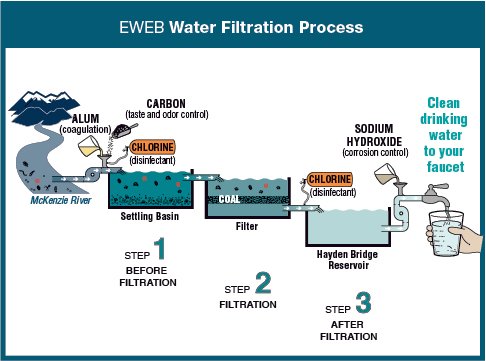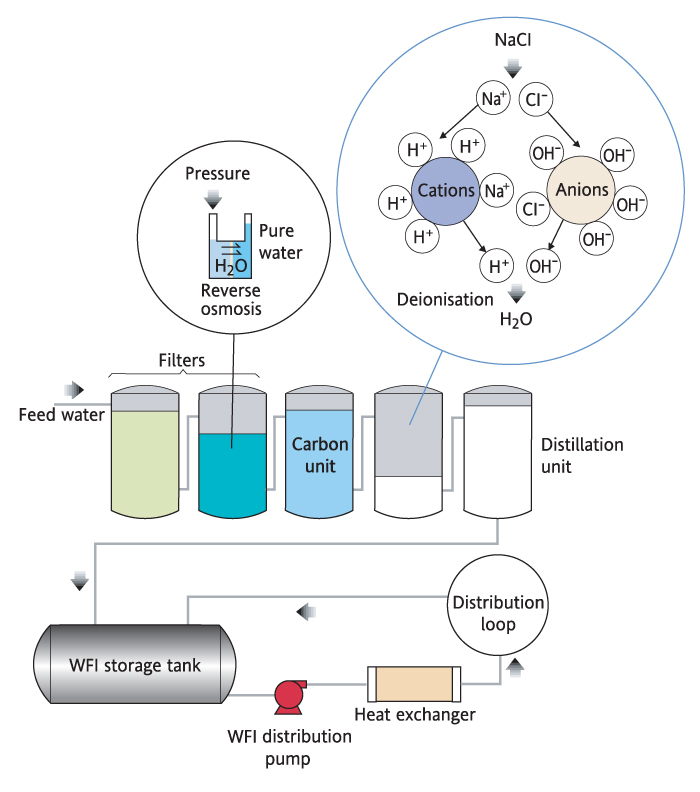Not known Details About Drinking Water Purifier
Table of ContentsMore About Drinking Water PurifierMore About Drinking Water PurifierAll about Drinking Water Purifier10 Easy Facts About Drinking Water Purifier ExplainedThe Main Principles Of Drinking Water Purifier
7), with a flow rate of 48 cubic metres per square metre of filter surface area per hour (this is written as 48 m3 m2 h1) are frequently utilized. When the filters have lots of caught solids, they are backwashed. In this process, clean water and air are pumped backwards up the filter to displace the trapped contaminations, and the water lugging the dust (described as backwash) is pumped right into the sewerage system, if there is one.
The quantity of chlorine left hereafter is called residual chlorine. This stays in the water all the method via the distribution system, safeguarding it from any kind of micro-organisms that could enter it, until the water reaches the consumers. Globe Wellness Company Standards (WHO, 2003) suggest a maximum recurring chlorine of 5 mg l1 of water.
5 mg l1 of water after half an hour' contact time (WHO, n. d.). There are various other means of sanitizing water (e - drinking water purifier. g. by utilizing the gas ozone, or ultraviolet radiation) yet these do not shield it from microbial contamination after it has actually left the water therapy plant. Adhering to disinfection the treated water is pumped right into the circulation system.
The Buzz on Drinking Water Purifier
7 Auxiliary therapy, Extra therapy may in some cases be needed for the advantage of the populace. One such instance is the fluoridation of water, where fluoride is included to water. It has been stated by the World Wellness Company that 'fluoridation of water materials, where possible, is one of the most efficient public health measure for the avoidance of dental degeneration' (THAT, 2001) - drinking water purifier.
On the various other hand, as you discovered in Study Session 2, in the Break Valley of Ethiopia, the water resources include a higher focus of fluoride than is desirable. Tekle-Haimanot et al. (1995) located that the level of fluoride in alcohol consumption water from deep wells there ranged from 1. 5 to 36 mg l1.
The 2 chemicals are included in and swiftly blended with the fluoride-contaminated water and after that the water is stirred carefully. Flocs of aluminium hydroxide form and also these remove the fluoride by adsorption and also ion exchange. The flocs are then gotten rid of by sedimentation. 5.3 Administration of wastes from water treatment plants, From the water therapy process that you have just examined, make a list of the various wastes that arise.
In the latter it is contributed to the incoming sewage, where it can assist negotiation of solids. The backwash from the sand filter is discharged into the drain or gone back to the river after settlement of solids. Packaging waste such as chemical drums can be returned to the provider for reuse. drinking water purifier.
Some Known Questions About Drinking Water Purifier.
5.4 Sustainability and also resilience in water treatment, In Study Session 4 you review some elements that can influence the sustainability of a water source. Lowering dirt disintegration by growing trees as well as keeping greenery can decrease the amount of silt that gathers in a storage tank and prolong its life.

It can be difficult to obtain extra components, so there must be plans in position for procurement of replacements. (These and various other monitoring problems are the subject of the following study session.) An additional important aspect in sustainability is an effective upkeep system, which requires planning and, notably, needs well-trained and also determined personnel.
With water treatment plants situated extremely close to water resources, having as well much water can be equally as a lot an issue for operations as having also little. Storms and floodings, worsened by climate adjustment, may overwhelm systems and also interrupt procedures, so proper flood defence procedures should be in location. The need to be resistant to these impacts is an additional reason that the tools as well as building of the plant should be of a high criterion.
Drinking Water Purifier Fundamentals Explained
The guidelines for directory the water system need of different classifications of communities, revealed in Table 5. 1, might be used to estimate the minimum amount of water that need to be provided for an offered populace. Think about a community with a populace of 60,000. What would be the minimum amount of water needed? From Table 5.
This allowance could, as an example, be 15%. The water will need to be saved in service tanks. As you discovered in Research study Session 1, service tanks have to hold a minimum of 36 hours' or 1. 5 days' water. Box 5. 1 reveals an estimation of water need as well as service tank dimension for a theoretical community.
The overall water try this out requirement each day would certainly be 200 + 13. Enabling for 15% leak as well as water usage by the water energy, each day the required quantity reference of treated water provided would be: 213. 5 m3 x 1.
The service tank would certainly need to hold a minimum of 36 hours' of supply (1. 5 days). This suggests that the service reservoir size would certainly be: 246 m3 x 1. 5 = 369 m3. This might be assembled to 370 m3. The water need would for that reason be 246 m3 daily, and also the minimum solution reservoir capability required would be 370 m3.
The Main Principles Of Drinking Water Purifier
These easy computations are consisted of below to provide you a suggestion of the approach that would be taken to planning a brand-new water system system. In technique, the procedure would certainly require numerous different engineering, economic as well as ecological factors to consider including a team of professionals. Recap of Research Session 5In Research Session 5, you have actually discovered that: Large-scale water treatment is called for when the populace needing water is big as well as surface water sources need to be used.
Coagulation is utilized to eliminate fine particles smaller than 1 m in size. Aluminium sulphate and also ferric chloride are 2 coagulants generally made use of in water therapy. The next process is flocculation, where the water is stirred delicately to make it possible for huge flocs to develop. When the large flocs have actually formed, the water goes to a sedimentation tank where the flocs settle out.
After filtering the water is disinfected by chlorine. The chlorine remains in the water as well as shields it till it reaches the consumers. Supplemental therapy includes fluoridation of the water, to protect teeth. Defluoridation might be needed in some areas to lower extreme fluoride to safe degrees. The wastes from a water treatment plant consist of testings, sludge, backwash waters and product packaging from the supply of chemicals as well as tools.
Strength of water therapy plant can be helped by taking safety measures versus natural dangers and also making sure that all devices and construction is of a high standard. Basic computations for supply of water can be accomplished if the size of the population to be offered and also other water demands are known.